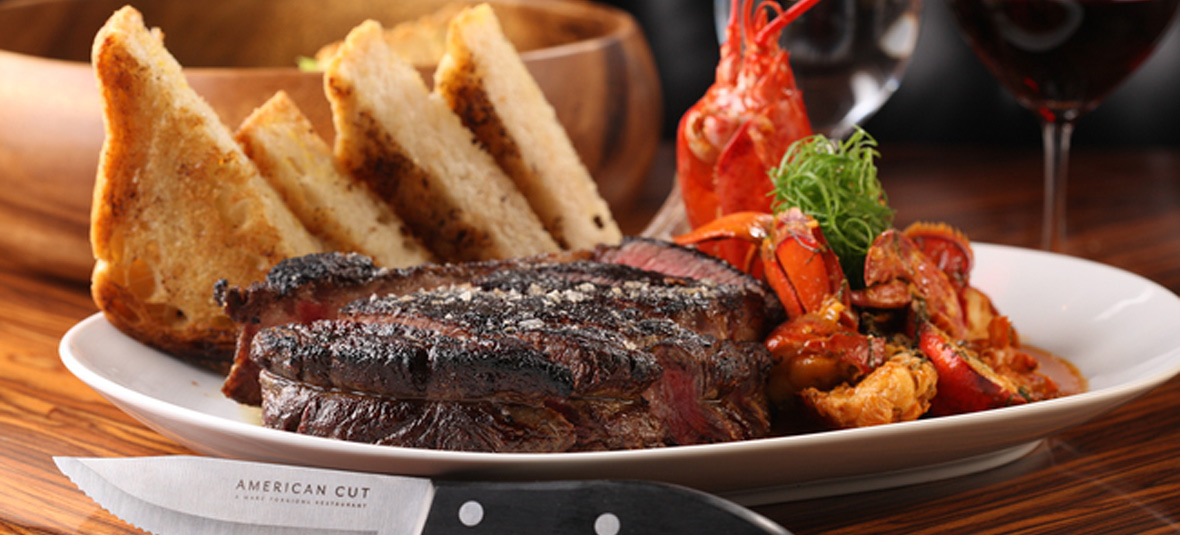This post has been read 2622 times!
 December 28, 2013- The WSJ explains well how new “steakhouses”, such as American Cut or Dylan Prime, are much different from the classic style, such as Peter Luger, “And then there’s this: The steakhouse has a guy who throws steaks under a broiler; the meatery has a chef…..These “modern meateries,” as I think of them, sate the same primal appetites as their gruff and clubby predecessors, but in a more contemporary way. The classic steakhouse is a temple of beef, with a lobster or lamb chop thrown in for the lady. The modern meatery serves a whole bestiary, devoting its energies in equal parts to beef, pork, lamb, veal, various birds and even some game animals. The beef at the old steakhouse was commodity meat, bought at the lowest bid, and the product of distant and anonymous feedlots. The meat you eat at Laurelhurst Market in Portland, Ore., or Underbelly in Houston comes from a handpicked rancher and is hormone-, cruelty- and antibiotic-free as a matter of course. More significant, the typical steakhouse focuses on three choices: strip steak, ribeye and tenderloin. The modern meatery uses every part of the animal, from snout to tail, frequently including parts from the inside, too.
December 28, 2013- The WSJ explains well how new “steakhouses”, such as American Cut or Dylan Prime, are much different from the classic style, such as Peter Luger, “And then there’s this: The steakhouse has a guy who throws steaks under a broiler; the meatery has a chef…..These “modern meateries,” as I think of them, sate the same primal appetites as their gruff and clubby predecessors, but in a more contemporary way. The classic steakhouse is a temple of beef, with a lobster or lamb chop thrown in for the lady. The modern meatery serves a whole bestiary, devoting its energies in equal parts to beef, pork, lamb, veal, various birds and even some game animals. The beef at the old steakhouse was commodity meat, bought at the lowest bid, and the product of distant and anonymous feedlots. The meat you eat at Laurelhurst Market in Portland, Ore., or Underbelly in Houston comes from a handpicked rancher and is hormone-, cruelty- and antibiotic-free as a matter of course. More significant, the typical steakhouse focuses on three choices: strip steak, ribeye and tenderloin. The modern meatery uses every part of the animal, from snout to tail, frequently including parts from the inside, too.
Beef prices have rocketed over the last few years, the result of catastrophic droughts in cattle country and the rising cost of feed, especially corn. A steakhouse can afford to charge $65 for a steak, but steakhouses exist in a bubble, like any luxury product. “Our customers are CEOs, vice presidents, executives,” said Antonio Mora, the executive chef of Maloney & Porcelli, one of Manhattan’s most successful steakhouses. “It’s almost like a clubhouse for them.” Corporate high-rollers with ’90s-era expense accounts may not care about prices, but many others do—especially the younger, more gastronomically aware customers that drive the restaurant business. They don’t mind eating cheek, or skirt, or flatiron steak at half the cost of ribeye. Pat LaFrieda, the country’s best-known independent meat purveyor, has seen demand for these once-obscure cuts soar. “With beef prices where they are, it’s out of necessity. Over the last few years, my customers have been looking for economy cuts in every category.”
What’s more, many chefs are appalled by the kind of waste that some traditional places take for granted. “I worked in a steakhouse, and they went through 10 cases of tenderloin in a night,” Underbelly’s chef Chris Shepherd told me, incredulously. “And the tenderloin is a tiny part of the carcass! It makes you wonder what happens to the rest of the animal.” I, for one, will take the intense, fire-seared Painted Hills short rib at Ox in Portland, Ore.—an explosion of beef flavor at its most primal and vivid—over any steakhouse ribeye I can think of. Greg Denton, Ox’s chef and co-owner, feels the same way. “To me, short rib is the most flavorful piece of beef. You have to work a little harder [to prepare it], sure. But every bite is worth it.””
